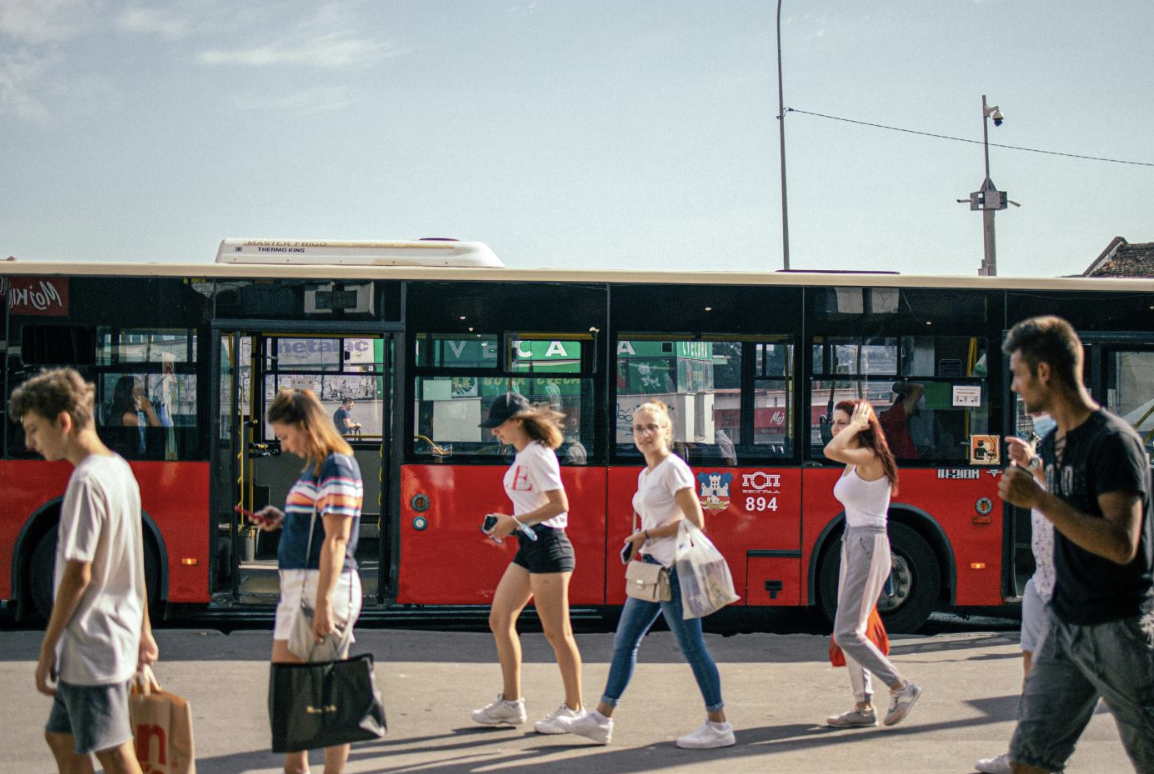Dynamically managing Urban Transformation portfolios: Our M4EG journey
Mayors for Economic Growth (M4EG), a joint EU and UNDP initiative focused on reimagining urban and local spaces, is running a Portfolio Journey with 10 selected cities in Eastern Partnership countries. Starting in late 2021 with its first cohort, the Portfolio Journey is a three-year-long learning, design and management programme, where cities get to learn about and apply a portfolio approach to their selected topic. The journey guides them to put in motion transformative Urban Makeovers to bring about improved economic opportunities, build vibrant communities and promote innovation practices.
Two cities in Ukraine are currently testing the portfolio approach for crisis response and recovery with the support of UNDP Ukraine and UNDP Istanbul Regional Hub (IRH). For the remaining eight cities, UNDP IRH is partnering with CHÔRA, an organization that brings their Strategic Innovation framework and capability to the table, to co-design and facilitate the cities’ Portfolio Journey.

How it started?
UNDP has embarked on a journey to move away from projects and apply a more connected and horizontal portfolio approach as an integral part of our Strategic Plan 2022-2025. Regionally, UNDP in Europe and Central Asia has been developing the portfolio practice, with the goal of applying it not only internally to our programming, but also with our partners such as municipalities. The journey started when we co-developed with CHÔRA Agorà, an urban transformation portfolio framework for informing and structuring our portfolio designs for urban transformation. The framework was first applied within the City Experiment Fund (CEF), where four cities designed and activated their urban portfolios in 2021. In 2023 the urban transformation work continues with 15 cities under the M4EG and CEF initiatives. Recently, we were able to activate portfolios in four new cities under the M4EG initiative: Batumi and Kutaisi in Georgia, Areni in Armenia, and Ceadîr-Lunga in Moldova.

Dynamic Management Framework
Activating portfolios means that we have finished the first round of design work – analyzed the context and the relational problems, formulated a shared portfolio intent, built a hypothesis for change, designed and initiated implementation of the first set of learning options, part of their portfolio. Learning options are interventions, which are designed by setting learning goals to inform the portfolio holder, usually municipality teams, about their selected topic. When layered together, learning options support decision-making regarding where to channel resources for lasting solutions to urban challenges. For us to extract learnings and experiences from a portfolio’s learning options and use the intelligence in both adapting our portfolio and scaling our solutions, we have created a Dynamic Management Framework for the M4EG Portfolio Journey.

The Dynamic Management Framework uses Sensemaking as a tool in order to enable a continuous and adaptive strategic learning cycle in the portfolios over time, which we have applied to urban challenges. Dynamically managing an urban transformation portfolio aims to amplify and multiply the positive systemic changes that the portfolio can create through supplying urban decision-makers with timely intelligence, learnings, and possibilities for adaptation. It also ensures that every time portfolio managers and teams are taking a decision, they are being held accountable, aligning their decision with the portfolio’s intent and the positive systemic changes it aims to achieve. The Dynamic Management Framework, therefore, ensures ongoing coherence between the envisioned portfolio intent and the executed portfolio activities, as well as between the overall municipal portfolio and other related activities in the city’s ever-changing context.
3 distinct characteristics of the Portfolio Dynamic Management Framework
1. A core characteristic of the framework is the learning spiral
At its core, dynamically managing a portfolio closes the loop between the design of a learning option, the learning option activity or experience itself, the extraction of learning from that experience through Sensemaking, and the intelligence generated that is used to inform and design new interventions based on the learnings.

This learning cycle is repeated at different levels of the Portfolio: Portfolio Intent, Portfolio Positions, and Portfolio Options. We will come back to this in further detail later, under Point 3.
It is in this stage of the framework that we use Sensemaking, a strategic organizational learning capability and a structured tool to learn from existing experiences such as projects and activities. We do this through a series of workshops with portfolio teams and when relevant we also include external stakeholders. Sensemaking has been widely used and tested in UNDP since the co-development of the UNDP Portfolio Sensemaking & Acceleration Protocol by CHÔRA and UNDP in 2019.
The purpose and at the same time the formalized outcome of Sensemaking is actionable intelligence, which emerges through the interpretation and synthesis of cross-activity insights. In the M4EG programme, as a first step, we ran a Sensemaking and Dynamic Management Training, facilitated by our colleagues at CHÔRA, to introduce the participating municipal teams to a basic understanding of the portfolio sensemaking approach, tools and practice. We are currently at the stage where the municipal teams will start applying these tools themselves.
2. How is portfolio management different from project management?
A portfolio consists of multiple projects, activities, or learning options being implemented at different speeds and timeframes, and with different but connected learning hypotheses. The portfolio is the connective tissue that binds and gives meaning to the wide range of smaller activities or projects. The portfolio therefore provides a system or mechanism for strategic learning and dynamic decision-making to make sure we are striving towards a higher order goal, which we call the Portfolio Intent. This intent-driven, integrative, dynamic quality defines and distinguishes our understanding and application of portfolios from other notions of “portfolios”, which usually refer to a mere collection of thematic projects that have and follow their own solution pathways without a systematic mechanism that binds and guides them by purpose.
When asking the question of project vs. portfolio management, it might also help to define what qualities we are looking for in a portfolio (that we possibly aren’t at the project level), which might make it more effective and successful. When designing a portfolio, we consider the following:
- the breadth and diversity of the activities that when combined, will accelerate the transformation we are interested in;
- the intensity of interactions the portfolio can induce in the city system and the density of relationships it engages towards the desired transformation;
- the speed and rhythm at which the portfolio will evolve and re-shape itself (again, through iterative use of Sensemaking as a tool for dynamic portfolio management);
- the overarching narrative the portfolio can produce for the problem-owner(s), here city governments, to attract and allocate resources.
These qualities are necessary when dynamically managing a complex urban transformation portfolio and we are currently working on embedding them into our management and evaluation framework. To manage and capture the information, experiences and intelligence of the portfolio throughout its management cycle, we have created a Portfolio Navigator, a light management dashboard, which showcases the interconnectedness of the different elements of the portfolio (such as Intent, Positions and Options). It can be updated regularly after each sensemaking phase and iteration in the design. The Navigator will help to manage the multiple activities happening simultaneously at different speeds and allow portfolio holders to monitor how these activities are mutually contributing to the Portfolio Intent.

3. Sensemaking at different levels of the portfolio
Portfolio Dynamic Management also utilizes a structured process of iterative Sensemaking at different levels of the portfolio (see visual below) that we are currently applying within M4EG. Dynamic management is characterized by a continuous rhythm of iterations and consequent re-designs of the portfolio. In M4EG, we are testing a dynamic management system at four distinct levels of the urban portfolios (Options, Positions, Portfolio and Intent), with at least two key roles required to support this process: 1) option leads (these might be multiple people, each leading one learning option in the portfolio) and 2) a portfolio lead. The option leads are responsible for ensuring the effective implementation of each learning option in the portfolio, as well as capturing ongoing learnings from the on-ground experience. On the other hand, the portfolio lead is responsible for the direction and iteration of the whole portfolio, as well as designing and organizing the sensemaking and intelligence generation process to support the portfolio adaptation and re-design.

In the Sensemaking and Dynamic Management Training, the municipal teams gained a better understanding of the four levels of portfolio management and their rhythm. Each city team aligned the distribution of the key roles and responsibilities to support the dynamic management process of their portfolio.
As a continuation of this learning process, we designed a hands-on training with CHÔRA to support teams with the first round of synthesis and documentation of learnings from activated options, which will be followed by sensemaking and intelligence generation training sessions in Spring 2023.
Ongoing learnings & next steps for M4EG
The process of setting up dynamic management systems and collective learning practices in organizations, which traditionally function in a linear and siloed way, has taught us that collective and strategic learning needs systemization, structures, and leadership. For this reason, we are currently experimenting with bridging the gap between the organizational structures and cultures of the municipalities we work with, and the new requirements that the Dynamic Portfolio Management Framework puts in place. Some concrete examples of what we are experimenting with right now:
- adding practical dynamic management requirements in the funding agreements and contracts between municipalities and UNDP;
- testing the monthly, quarterly, bi-annual and annual rhythm of the learning cycle with different municipalities and taking stock of the feedback;
- acknowledging that thinking in systems, relationships, synthethizing information, generating intelligence and leading by intent are specific capabilities that need to be built into systems;
- knowledge management systems are almost non-existent in municipalities and this poses an opportunity to strategically invest in such capabilities to inform dynamic management and decision-making.
Stay tuned for Part 2 of this blog series on our learnings on applying dynamic portfolio management with cities! If you are doing dynamic portfolio management at the moment or wish to do so, please connect with us and share your reflections – we are here to build on each other’s learnings.
Background:
In 2021 UNDP, together with the EU, launched the Mayors for Economic Growth (M4EG), a regional initiative hosting a network of some 350 municipalities in the Eastern Partnership – Armenia, Azerbaijan, Georgia, Moldova, and Ukraine. The M4EG’s intention is to demonstrate and inspire secondary cities’ new trajectories of growth to become more attractive and vibrant for people and financing.
CHÔRA’s purpose is to enable complex social systems with transformational intents to take decisions about themselves. You can find a glimpse of our thinking and doing in development in our Green Paper: “Future of Development: Make Happen with Portfolios of Options”.
Additional resources and readings:
- See this previous article by our colleagues at the UNDP to learn more about how Sensemaking is being used in the UNDP.
- See this article series (Part 1 and Part 2) by CHÔRA that demonstrates how the Dynamic Management tool and capability were applied with the UNDP Malawi CO.
- For an example of how the Agorà Urban Transformation Framework, co-developed by UNDP IRH and CHÔRA was applied, see this article about the Armenian city Stepanavan’s City Experiment Fund Portfolio Journey in 2021.



